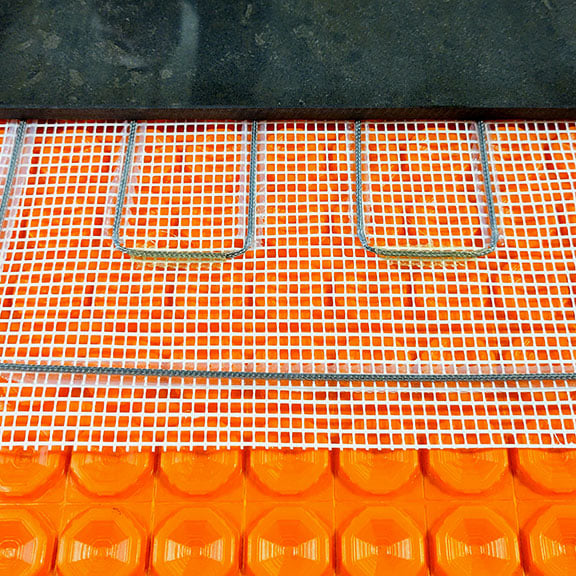Bathroom remodeling over the years
Bathroom remodeling trends in the last 100 years. With its sink, tub, and toilet, the bathroom was an invention of the 20th century. Though the toilet was already invented, the wealthy enjoyed the concept of a dedicated room for personal hygiene and grooming.
How did the bathtub come about?
What John Michael Kohler saw in 1873 when he looked at a cast-iron horse trough was the bathtub that launched a global plumbing company. That pioneering spirit of ingenuity – the kind that sees a bathing revolution in a horse trough – has defined Kohler Co. from its earliest days.
It wasn’t until the second quarter of the 20th century that bathrooms as an essential home component.
The first modern flushable toilet was used in 1596 by Sir John Harington, an English courtier and the godson of Queen Elizabeth I. Harington’s device called for a 2-foot-deep oval bowl waterproofed with pitch, resin, and wax and fed by water from an upstairs cistern.
Flushing Harington’s pot required 7.5 gallons of water—a veritable torrent in the era before indoor plumbing. Harington noted that when water was scarce, up to 20 people could use his commode between flushes.
This blog post explores what bathrooms were like in the past compared to today.
Bathrooms at the turn of the 19th century
The chamber pot vs. the outhouse
In 1900, a bowl, pitcher, and chamber pot were standard issues in most bedrooms and kept in a small commode cabinet. Bathing was a weekly affair on Saturday evening because it was hard work to heat that much water. The family bath was taken in the kitchen or on the back porch in a large galvanized tub.
The outhouse was “the necessary” and usually entailed a short march through the kitchen to the back porch and down the path. Many a young child envisioned spiders and snakes lurking in its dark recesses. Most household members were entitled to the comfort of a chamber pot stored under the bed and emptied every morning.
What do the different holes on an outhouse door mean?
There are many theories on why holes were cut in outhouse doors and the significance of their shape. One theory is that the holes in the doors of outhouses were designed to let light from a lantern shine out at night (occupied).
Legend has it that the reason for the hole was to differentiate which outhouse was for the men and which was for the women. Supposedly, the women’s had a crescent Moon cut into its door, and the men’s had a star. If there were both shapes on the door, it is used by the entire family.
The more popular belief is that the crescent shape was simply a way to open and close the door from the inside, as it seemed using expensive latching hardware would be a waste on such a humble structure. Even when door latches were added to the door, the crescent Moon tradition continued as a signature decoration for this piece of American bathroom design history.
Houses are connected to the sewer
Now, homes in bigger cities are connected to city sewers. Indoor bathrooms were accessible for the masses — even if shared among families. More efficient washdown, high tank toilets transitioned to low tanks. And in 1910, the closed tank and cistern toilets were introduced to the public.
Ornamentation disappeared in favor of smooth, white, sanitary — and easy-to-clean — surfaces. A focus on sanitation and hygiene was becoming more prevalent. In England, the government began permanent chlorination of the water supply to treat it for infectious agents.
In 1909, a tin bath with a wood-covered bottom, painted in Japan green (a type of pre-1940 enamel paint), is the most common tub in use.
Bathrooms during the 20th-century teen years
During this time, the “sanitary look” designs were in style. Bathrooms featured white porcelain toilets, bathtubs, and basins. A 1910-inspired bathroom used a white basin on a white panel vanity, subway tiles on the walls, and light grey floor tiles.
In 1913, Albert Brown invented the Quatern Cartridge. This cartridge required just a quarter turn instead of the several turns required by other faucets in use during this period. The Quatern Cartridge became very popular because it preserved the washers in the faucet.
Bathrooms during the 1920s
The Roaring Twenties, or Jazz Age, was a raucous era of joy, glamour, experimentation, and rebellion. The one-piece vitreous china toilet came on the market in 1922.
In the 1920s, the U.S. began pushing the shower out to the broader public instead of just the wealthy. It wasn’t until the 1960s that the U.K. followed suit, by which time the electric shower launched onto the market.
David Dunbar Buick developed a method for permanently coating cast iron with vitreous enamel, which allowed the production of white and ultimately colored tubs at a lower cost.
By the end of the decade, most claw foot-tubs went away and were replaced with modern built-in units. The Crane Co. began producing bathroom fixtures in various colors for the American market that brought color into the bathroom like never before.
From brass fixtures and antique mirrors to pedestal vanities and decorative bathroom tiles, Art Deco styling was all about extravagance. The two essential materials in a 1920s bathroom were marble and brass.
New Invention: In 1927, colored faucets were introduced to the public. Homeowners chose colors and styles that appealed to their design sensibility and complemented the architectural flavor of their homes.
Bathrooms in the 1930s
In the Thirties, toilets, tubs, tile, and sinks were bright and colorful, including pastels and ivory and black, especially as an Art Deco accent.
Bathroom design
A typical 1930s bathroom is often a nostalgic bathroom with a vintage touch. The basis of the bathroom consists of 1930s tiles in a chess pattern. These are often black and white tiles and mint green was also a popular choice.
However, even though farmhouses had running water, a family still had to use outhouses and took baths just once a week. They shared the warmed bathwater heated on the stove.
Bathrooms in the 1940s
In the Forties, white resurfaced, but it wasn’t alone.
According to The New York Times, “In 1940, only 55 percent of homes with plumbing had what the government considers a ‘complete system’ — hot and cold running water, a flush toilet and a tub or shower. Sixty years later, 99 percent of all homes had all those features.”
Bathroom design
Richer tones like burgundy, red, and navy also became popular. Sinks were often small and wall-hung to take up minimal space. Wartime shortages kept supplies tight and design spare. After the war, homeowners were able to once again focus on the frivolity of design. Pastels began to make their way into suburban homes.
New invention: Al Moen started working on a single-handle faucet from 1940 to 1945. He got the idea after scalding himself with overheated tap water in 1937.
New invention: In 1945, Landis Perry came up with a ball valve for faucets. The Delta single-handle faucet was the first faucet to utilize the ball valve. Wolvering Brass also added to the functionality of faucets by designing ceramic discs for water control.
New invention: Introducing Charmin toilet paper. This toilet paper marketed the softness factor instead of its purpose. Charmin was an extremely successful product and toilet paper quickly became a necessity instead of a luxury item.
But just how did people wipe before there was toilet paper?
Typically, people would use leaves, grass, ferns, corn cobs, maize, fruit skins, seashells, stone, sand, moss, snow, and water. The simplest way was the physical use of one’s hand. Wealthy people usually used wool, lace, or hemp to wipe their bums.
However, the mass production of toilet paper continued, and perforated rolls like what we use today were patented in 1871 by Zeth Wheeler. In 1890, the Scott brand made toilet paper rolls popular with drug stores and hotels. Many people were uncomfortable buying toilet paper because Americans were embarrassed to admit their bodily functions.
Functionality was paramount in the 1940s, leading to a rise in homes with linoleum flooring. Room dividers offering additional storage space like this wall-cum-towel-rack were also popular. Though money was tight for many families, it didn’t stop them from jazzing up their homes with decorative textiles and ornaments.
Bathrooms in the 1950s
The Fifties was time for returning pastels (especially pink), toilets, tubs, and sinks. A second or even third bathroom became a status symbol of post-War suburban sprawl.
Bathroom design
Postwar bathrooms were light-filled, cheery, and, most importantly, pastel. Pink, blue, and green sinks, toilets, and tubs took over the American bathroom.
Nearly 70 years later, homeowners are still ripping apart retro bathrooms to remove any hint of the pastel period, while a few diehard purists strive to preserve them.
New invention: The faucet ball valve, 1952
Landis Perry designed the first faucet ball valve. The faucet mixed hot and cold water using the volume control. Perry patented his facet ball valve design in 1952.
Bathrooms in the 1960s
Colorful bathrooms still reigned in the 1960s, with pastels and eye-catching accents. From floors and walls to countertops, the tile was a significant design element. Tubs, toilets, sinks, and fixtures were porcelain and full of quintessential 1960’s flare. Pendant lights flanking both sides of the mirror were also a popular choice.
New invention: the American Bidet
The American Bidet Co. marketed an adjustable spray nozzle and warm water option, seeking to make the bidet a household item in the U.S… Unfortunately, the bidet never caught on in American culture.
Bathroom design
A popular bathroom color that was all the rage in the 1960s was Ming Green. Here you see a bathroom designed around this “interesting” color. Notice the remarkable blend of Ming Green fixtures with a deep shade of blue and an accent of Chinese Red.
Another color pallet in bathroom elegance is called Spice Mocha. This new color trend follows the recent decorator trends in home fashions. Combined with the pace-setting designs of American-Standard bathroom fixtures, Spice Mocha promised to be that exciting flair while intimating a mellow warmth.
Bathrooms in the 1970s
The 1970s ushered in an age of environmental awareness, and earth tones began to creep into interior design. Water conservation became part of the lexicon. Low-flow showerheads — a staple in the Navy — made their way into many American homes.
American novelist Tom Wolfe labeled the 1970s as “the Me Decade.” He based this on America’s newfound preoccupation with self-discovery and self-awareness. Amidst an oil crisis and rising inflation, American interior design changed to reflect new regard for nature and an awareness of environmental concerns.
Bathroom design
A 1970’s bathroom is carpeted with countertops were made with popular laminates. Pastels made their way out of the picture to be replaced by yellow, gold, brown, avocado, and teal. Textured tiles were a 70’s bathroom staple with exciting designs and arrangements.
Flooring appeared in all of the bright colors of the 1970s palette. In the bathroom, a bright yellow linoleum floor would have been considered very fashionable and wood paneling on the walls. Pastels made their way out of the picture to be replaced by yellow, gold, brown, avocado, and teal. Fluffy shag and llama area rugs contrasted with the modern furnishings. Linoleum and wood flooring were used throughout the home, and ceramic tile was standard for bathroom floors.
Bathrooms in the 1980s
The powder room reflected the romantic vibe found in the 1980s kitchen: brass fixtures, multiple patterns of heavy floral wallpaper, vinyl flooring, and tile ruled the bathroom. The wall-to-wall carpet was still considered a sign of luxury.
Some of the most common decorative colors of the 80’s bathroom were dusty muted pastels made their debut with peach, mauve, and teal being. White and gray became the dominant tones again, and automatic faucets became widely available in public places, like airports, malls, and stadiums.
The powder room reflected the romantic vibe found in the 1980s kitchen: brass fixtures, multiple patterns of heavy floral wallpaper, vinyl flooring, and white tile ruled the bathroom. The wall-to-wall carpet feature was still considered a sign of luxury – sometimes even in the bathroom.
Not all bathrooms featured the dusty, muted color palette. This image features a graphics-inspired, daring black and white palette that looks like something out of Miami Vice’s television show. The Memphis Milano design movement inspired many 1980s homes with bold shapes, contrasting colors, and open-plan layouts.
Bathrooms in the 1990s
Every luxury 1990s bathroom had to have a large garden tub or Jacuzzi. At that time, the color dusty rose (as pictured) was the most popular whirlpool bathtub color with gold accent rings.
Additionally, whirlpool bathtubs placed in a corner were a modern bathroom design feature of the 1990s. Today, whirlpool bathtubs are considered highly unsanitary and virtually unusable. Furthermore, the 1990s brought more cabinetry into bathrooms. Large double-sink vanity, a huge mirror, and maybe even Hollywood-dressing-room-style lights became standard amenities in newly built homes.
Lastly, in 1992, the U.S. Energy Policy Act passed, requiring flush toilets to use only 1.6 gallons of water.
Bathrooms in the turn of the century 2000
These decor trends share a decade with Britney Spears’ best years, the release of the first iPod, and the once-coveted Blu-ray disc. Though it doesn’t seem that long ago, some of these decor trends from the 2000s feel like they came from centuries past. We can thank the 2000s for our obsession with white kitchens and all of those mason jars collecting dust in the basement.
While some trends of the 2000s were understated and subtle, the Tuscan-style bathroom was not one of them. As homeowners upgraded in size, we saw larger bathrooms with ornate features and colors such as ochre and terracotta paired with heavy, dark wood.
New Invention: In 2001, the first digital shower was patented in London by Aqualisa and the World Toilet Organization is formed. Soon after, World Toilet Day is established to raise awareness about the global sanitation crisis.
New Invention: Delta Faucet Company introduced the touch faucet in 2008. This faucet turns on and off after being touched anywhere, including the handles or the spout. You can use your hand, wrist, forearm, or elbow to turn on a touch faucet.
Bathrooms into the new millennium
What’s popular in a bathroom in the new millennium? Connected and Wi-Fi-enabled technology like touchless toilets and faucets, app-controls, and voice-commands for shower settings, water temperature, pressure, and humidity control.
In addition, homeowners have started to experience the bliss of a warm bathroom floor. Thanks to electric radiant floor heat, the bathroom floor stays toasty warm for pennies an hour.
New millennium bathrooms are featuring cement sinks and natural materials because of tariffs on building materials. This lack of material availability has many homeowners turning to less expensive building materials for bathroom design, such as cement. Natural stones like limestone are also getting noticed for being eco-friendly and marking a shift from the traditional subway tile.
In the new millennium, easy-clean surfaces and personal hygiene is the focus in new construction and remodeling. Spa-like sanctuaries in a residential bathroom are gaining popularity around the United States.
In today’s market, total bathroom expenditures exceed $82 billion, with more than $50 billion for new construction and $32 billion for remodeling. Surpassed only by the kitchen, the bathroom is the most important room in the house. Whether full baths, half baths, powder rooms, en suites, steam rooms, or saunas — we love our bathrooms!
General Contractors - install Gold Heat in your next project. We'll show you how!
Have you ever considered including electric radiant floor heat in a bathroom remodel? Under-floor heat is so beneficial in many ways and Gold Heat is here to help. If you’re considering a bathroom remodel and want to learn more about how to design a custom radiant floor heat mat, give Gold Heat a call at 1-877-789-4328 or email design@goldheat.com. Or visit Gold Heat online at www.goldheat.com.


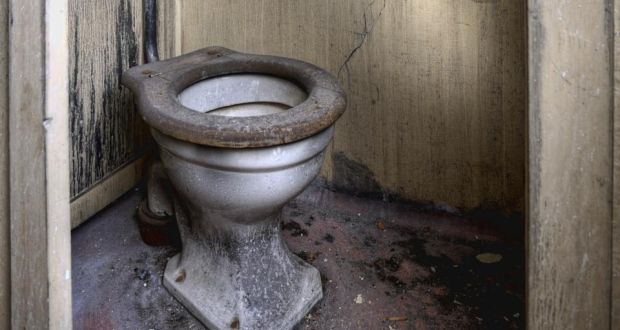
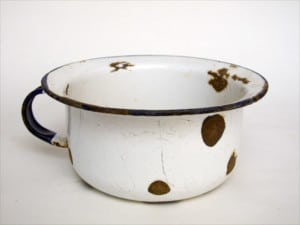
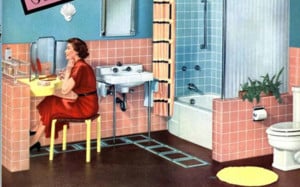
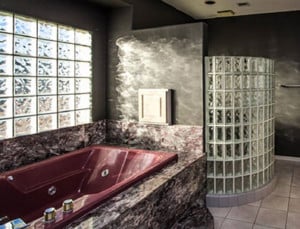

.jpg)

